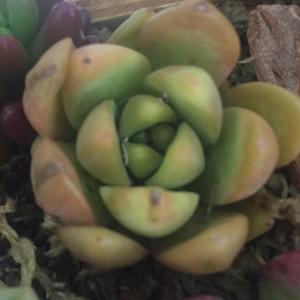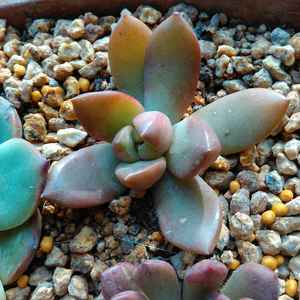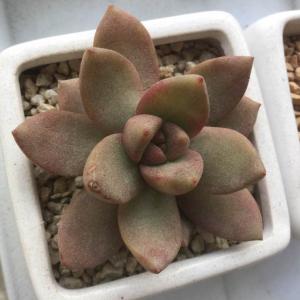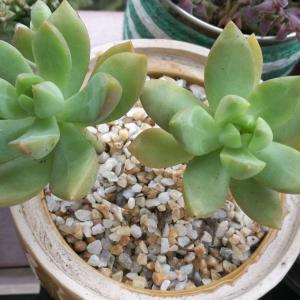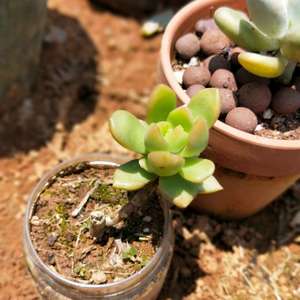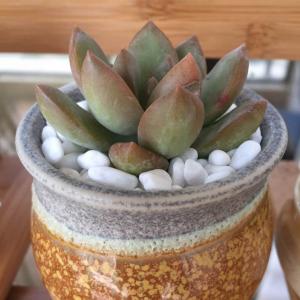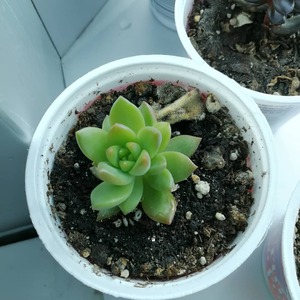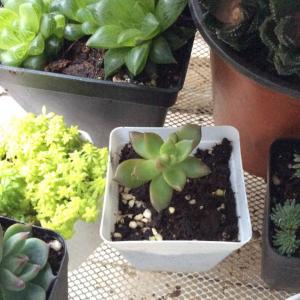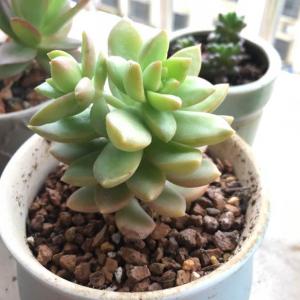Posts (221)
格桑花
2023-11-16

Introduction
In addition to conventional medicine, there are various alternative healing modalities that have gained popularity in recent years. These practices focus on holistic well-being and aim to promote healing at the physical, mental, emotional, and spiritual levels. In this guide, we will explore some alternative healing modalities, including energy work, sound therapy, and more, to help you discover new avenues for wellness and self-care.Energy Work
Energy work is based on the belief that the human body has an energy field that can be influenced to promote healing. Some popular energy work practices include: - Reiki: A Japanese technique that involves the transfer of healing energy through the practitioner's hands to the recipient's body. - Acupuncture: An ancient Chinese practice that involves inserting thin needles into specific points on the body to stimulate energy flow and restore balance. - Chakra Healing: Focuses on balancing and aligning the body's energy centers, known as chakras, to promote overall well-being.Sound Therapy
Sound therapy utilizes sound vibrations to promote relaxation, reduce stress, and enhance healing. Some common sound therapy practices include: - Tibetan Singing Bowls: These bowls produce harmonic sounds that can induce a deep state of relaxation and meditation. - Crystal Singing Bowls: Made from quartz crystal, these bowls produce pure tones that can help balance energy and promote healing. - Gong Baths: Involves immersing oneself in the sounds and vibrations of a gong, which can induce a meditative and transformative state.Herbal Medicine
Herbal medicine involves using plants and their extracts for healing purposes. Some herbal remedies and practices include: - Herbal Teas: Drinking teas made from medicinal plants can support various aspects of health, such as digestion, relaxation, and immune system function. - Herbal Supplements: Taking herbal supplements, such as capsules or tinctures, can provide targeted support for specific health conditions. - Aromatherapy: The use of essential oils extracted from plants for their therapeutic properties, such as lavender for relaxation or peppermint for headache relief.Mindfulness and Meditation
Mindfulness and meditation practices can help calm the mind, reduce stress, and improve overall well-being. Some popular techniques include: - Mindfulness Meditation: Involves focusing on the present moment, observing thoughts without judgment, and cultivating a sense of awareness. - Transcendental Meditation: A technique that uses a specific mantra to help achieve a state of deep relaxation and inner peace. - Loving-Kindness Meditation: Focuses on developing compassion and sending well-wishes to oneself and others.Bodywork Therapies
Bodywork therapies involve physical manipulation or touch to promote relaxation, relieve pain, and improve overall health. Some common bodywork practices include: - Massage Therapy: Involves manipulating soft tissues, muscles, and joints to alleviate tension, improve circulation, and promote relaxation. - Reflexology: A practice that involves applying pressure to specific points on the feet, hands, or ears, which correspond to various organs and systems in the body. - Craniosacral Therapy: Gentle manipulation of the skull, spine, and sacrum to release tension and improve the flow of cerebrospinal fluid.Conclusion
Exploring alternative healing modalities can provide new avenues for wellness and self-care. Energy work, sound therapy, herbal medicine, mindfulness and meditation, and bodywork therapies are just a few examples of the diverse practices available. Remember to consult with trained professionals or practitioners before trying any new healing modality and always listen to your body's needs. By incorporating these practices into your life, you can enhance your overall well-being and discover a deeper connection to your mind, body, and spirit.
Article
格桑花
2023-11-15

Look for Deals:
This is an easy step to begin with. Various travel websites/apps run offers and discounts on various destinations and travel, during different occasions. Keep an eye out for such offers, last-minute deals, coupons, flash sales, and package deals that combine travel (to & fro) and accommodation together. Search the net for various coupons, discounts, and deals that might help you save money on your travel.Plan your travels during off-peak season:
It is a fantastic hack. It will help you save more than you think. Choosing to travel during off-peak season is a great way to travel on a budget. It will not only help you find great deals and discounts on flights but also on accommodations and food. You’ll find all these at much lower prices. In addition to that, you’ll enjoy the place even more as it is much less crowded during off-peak season. Research a bit about your destination and take advantage of lower prices, and more fun.Pack Light:
It is a life-saving hack to travel with bags that weigh lighter. It’s an advantage not only in the fact that it is convenient but also because it helps you save on the extra charge that airlines may charge you for extra weight on your bags. So ensure that you pack light when traveling, it will save you time during security checks and also money.Search for various accommodations:
Hotels, as we know, can be expensive and can take a toll on your pocket. It is especially expensive in places that are popular among tourists. This is why it is recommended to search for options like hostels, guest houses, vacation stays, or homes on rent through various websites. You might also find some deals on the already reduced prices. It also helps in having a more personalized and authentic experience by mixing up with other people, and locals.Find local places for food:
To say, it is to eat like you’re a resident of the place. Find restaurants that offer a variety of food at reasonable costs. Trying different cuisines is a crucial aspect of travel. Especially the specialty of the place. In such cases, eating at fancy restaurants or cafés might drain your pocket quickly. It is advised to explore local markets, street food stalls, and small restaurants that are run by family. Not only will this help you eat good food within your budget but also help you experience authentic flavors.Travel via Public Transport:
This is such a simple task. Taking taxis or cabs on a booking will exhaust your budget before you realize it. This is why it is best to make use of local public transport like buses or vans. It is one of the most common ways to remain cost-effective while traveling. Using the public transport system of a place will help you get to know the place a little better and you may also avail the offers if you keep an eye. This way you can save your money.Wi-Fi is your savior:
If you’re planning to travel abroad/international, roaming charges can be draining for your pocket. Using Wi-Fi whenever possible can help you save on those charges. Many restaurants, cafés, and even public places have Wi-Fi that you might consider using to avoid incurring those data charges on your travel.Smart Currency Exchange:
If you’re thinking of exchanging your currency at the airport, you’re all up for a loss. They charge higher fees and offer way less favorable rates on exchange. What you might consider while exchanging currency is to use an ATM at local banks to secure the best exchange rates. Also, try to inform your bank of your travel schedule to avoid any issues with your bank cards or transactions later.Conclusion:
Traveling is not only an escape but a means to find out what amazing things this world holds. To know everything we have never known. It also does not imply that travel on a budget sacrifices your experience and comfort. And planning to do that on a budget is a bit of
Article
格桑花
2023-11-14

The Foundation of Connection: Empathy and Active Listening
Empathy is the cornerstone of any meaningful relationship. It is the ability to understand and share the feelings of another person. When we approach our relationships with empathy, we open the door to genuine understanding. It's about being present in the moment, acknowledging the emotions of others, and showing that their feelings matter. Active listening, another vital component, goes hand in hand with empathy. It involves not just hearing the words someone is saying, but truly understanding their perspective, feelings, and concerns. When we listen actively, we validate the other person, fostering a sense of trust and connection.Effective Communication: The Bridge to Understanding
In any relationship, communication is the glue that holds people together. Being open to the views and feelings of others while simultaneously expressing oneself in a clear, honest, and concise manner is the essence of effective communication. It's critical to respectfully and freely communicate feelings and concerns so that both sides feel heard and appreciated. To resolve disagreements, communication is essential. Real understanding can grow and misunderstandings are reduced in open, sincere, and polite discussions.Building Trust: The Bedrock of Meaningful Relationships
All meaningful relationships are founded on the foundation of trust. Trust must be acquired through patience and steadiness, and once it is, it needs to be guarded and fostered. The foundation of trust is honesty, dependability, and the knowledge that one can rely on another, particularly in difficult circumstances. Maintaining integrity, being open and honest, and honoring limits are all part of developing trust. Relationships with a strong foundation of faith and confidence in one another can overcome difficulties, arguments, and uncertainty when trust is there.Embracing Vulnerability: Strength in Openness
Although vulnerability is sometimes seen as a weakness, it plays a very powerful role in partnerships. Allowing oneself to be honest, open, and genuine—even when it's uncomfortable—is the definition of vulnerability. It includes voicing real feelings, anxieties, and insecurities. There is a profound sense of intimacy and connection that results from people being vulnerable with one another. It creates an atmosphere in which people may be authentic without worrying about criticism. A stronger emotional connection and a more fulfilling relationship are made possible by embracing vulnerability.Respect for Differences: Celebrating Individuality
Differences are normal and unavoidable in any relationship as no two people are identical. Understanding must be fostered by accepting these variances. Recognizing that every person is unique in their viewpoint, convictions, and life experiences is crucial. A more fulfilling relationship may result from accepting and appreciating the other person's differences rather than attempting to influence or change them. Everyone feels appreciated and understood for who they are in an environment that values and respects individuality.Forgiveness and Compassion: Healing Wounds
Misunderstandings and arguments are inevitable in any relationship. People are naturally that way. The capacity for forgiveness and compassion is what distinguishes meaningful relationships. To be forgiven is to let go of the weight of wrath and resentment, not to support cruel deeds. Realizing that everyone makes errors and appreciating one another's humanity are necessary components of compassion. In the presence of forgiveness and compassion, friendships can strengthen and relationships can mend. They enhance interpersonal connections by offering chances for development, education, and rejuvenation.Investing Time and Effort: Nurturing Lasting Bonds
It takes time, effort, and dedication to establish meaningful relationships. Being willing to spend quality time together, actively participating in each other's life, and offering support through both happy and difficult times are all part of investing in relationships. It is attempting to comprehend the aspirations, objectives, and anxieties of the other person. The emotional bond can be reinforced by small actions like exchanging considerate messages or spending a peaceful evening together. A sense of security and affection is fostered by consistent effort and attention, which shows how much is valued in the relationship.Conclusion: The Beauty of Deep Connections
The value of meaningful connections can't be emphasized in a society where surface-level interactions seem to rule the day. Our lives are enriched in ways that material goods and transient events cannot match by developing understanding and meaningful relationships. Relationships can be built that are not only long-lasting but also incredibly gratifying when people possess empathy, excellent communication skills, trust, vulnerability, respect, forgiveness, and dedication. In times of grief and celebration, these relationships boost happiness by giving a feeling of love, support, and belonging. By investing in these connections, we strengthen not just the ties that bind us but also the very nature of what it is to be human—the ability to love, comprehend, and genuinely connect.
Article
格桑花
2023-11-13

1. Embrace Self-Discovery: Know Yourself
Self-awareness is the cornerstone of human development. To understand your strengths, weaknesses, interests, and purpose, embrace the road of self-discovery. Consider your objectives, hobbies, and values. Why do you do things? What are your main principles? Being deeply aware of who you are gives you the clarity necessary to make decisions that are true to who you are and to create significant goals.2. Set Clear and Ambitious Goals: Dream Big
As lighthouses lead you to your intended location, goals serve as guides. Establish attainable objectives that are in line with your desires and passions. Clearly state your objectives and divide them into manageable phases, regardless of whether they have to do with your relationships, work, health, or personal growth. Aspirational objectives motivate you to push limits and realize your full potential. Dream large and strive high.3. Embrace Lifelong Learning: Knowledge is Power
The currency of success in the modern era is knowledge. Whether via traditional schooling, online courses, workshops, or independent study, commit to lifelong learning. Stay inquisitive and investigate a range of topics. Developing new abilities and information broadens your perspective and improves your competence, making you more adaptive in a world that is changing quickly.4. Develop Resilience: Embrace Challenges
On the road to personal development, obstacles are unavoidable. Reframe failures as chances for learning and development to increase your resilience. Develop a growth attitude by realizing that setbacks are necessary but temporary stepping stones on the road to achievement. Taking on hurdles with grace and drive is made possible by adopting a positive outlook and developing mental toughness.5. Cultivate Healthy Habits: Nurture Your Body and Mind
Maintaining one's physical and mental health is essential to personal development. Make your health a priority by implementing a healthy diet, consistent exercise, and enough sleep. Practice stress-relieving techniques like yoga and meditation, and cultivate awareness. By taking care of your body and mind, you may pursue your goals with vigor and vitality while having more energy, clarity of thought, and general resilience.6. Foster Meaningful Relationships: Surround Yourself with Positivity
Your social circle is important to your personal development. Build relationships with upbeat, encouraging people who make you feel good about yourself. An empowering environment is produced when you surround yourself with people who support your goals and believe in your potential. Develop your emotional intelligence as well, as this can help you become a more effective communicator, and empath, and develop lasting relationships.7. Embrace Adaptability: Thrive in Change
Rapid advances in technology and societal changes are hallmarks of the modern world. Develop adaptation as a fundamental quality and embrace change. Be willing to venture outside of your comfort zone, welcome innovation, and keep an open mind. Being adaptable helps you take advantage of new chances, deal with adversity, and change as the world around you does.8. Practice Gratitude: Cultivate a Positive Mindset
Gratitude is a strong motivator for happiness and personal development. Recognize and value all of the blessings in your life, no matter how minor. Having gratitude helps you think more positively by drawing your attention from your lack to your plenty. Maintain a gratitude notebook or show your appreciation to others around you as a regular way to practice thankfulness. Having a positive outlook improves your resilience, inventiveness, and general state of health.9. Take Inspired Action: Turn Dreams into Reality
Personal development is an active process that calls for deliberate and motivated activity. Regardless of how little they may appear, make steady progress toward your objectives. Divide your goals into achievable activities and make a daily commitment to action. Procrastination is the enemy of progress; develop perseverance and discipline to overcome it. You may achieve your goal of realizing your full potential with each little step you take.10. Reflect and Celebrate: Acknowledge Your Progress
Consider your path of personal development regularly. No matter how small your accomplishments may seem, acknowledge them. Recognize your accomplishments and the obstacles you have surmounted. Thinking back on your progress gives you more self-assurance and strengthens your faith in your skills. Celebrate your victories, take lessons from your setbacks, and make the most of every opportunity to grow into the greatest version of yourself.Conclusion
Realizing your potential is a journey that lasts a lifetime rather than a destination. Savor the times of growth and self-discovery; embrace the trials and rejoice in your achievements. Instead of being a strict formula, the modern guide to personal growth and success is a flexible framework that gives you the ability to change, adapt, and prosper in the always-shifting world of life. You have the keys to unlocking your entire potential and building a life of meaning, fulfillment, and unending success: self-awareness, resilience, adaptability, and inspired action. Always keep in mind that your personal growth journey is entirely your own; embrace it with a strong sense of enthusiasm, resolve, and the unshakeable conviction that you are capable of reaching great heights.
Article
格桑花
2023-11-12

The Science of Nature's Healing Effects
Nature's restorative powers are well-documented in scientific literature. Exposure to natural environments has been shown to lower cortisol levels, reduce stress, and improve mood. The phenomenon known as "forest bathing" in Japan, where individuals immerse themselves in a forest atmosphere, has been linked with long-term health benefits, including improved immune system function and reduced risk of chronic illnesses.Integrating Nature into Daily Life
Bringing the outdoors into our daily routine doesn't require monumental changes. It can be as simple as taking a walk in a local park, starting a garden, or even keeping plants in the home. These activities can help us slow down, appreciate the present moment, and engage with the environment on a sensory level.Mental Clarity and Emotional Balance
Time spent outdoors, away from the constant distractions of modern life, can provide mental clarity and emotional balance. Activities like hiking, kayaking, or simply sitting by a lake allow the mind to reset and can lead to increased creativity, focus, and problem-solving abilities.Physical Health and Outdoor Activity
The benefits of outdoor activities extend to physical health as well. Whether it's walking, running, cycling, or playing sports, the combination of physical exercise and fresh air contributes to cardiovascular health, muscle strengthening, and overall physical endurance.Connection and Community in Nature
Nature has a unique way of fostering connections—both with other people and with the environment itself. Community gardens, hiking clubs, and group outdoor fitness classes are excellent ways to build relationships, find common ground, and support one another in the pursuit of health and wellness.The Importance of Sustainable Interaction
As we seek healing through nature, it's also our responsibility to interact with the environment sustainably. This means practicing leave-no-trace principles, respecting wildlife, and supporting conservation efforts to ensure that these natural spaces remain for future generations.Overcoming Barriers to Outdoor Access
Access to natural spaces can sometimes be a challenge, especially in urban environments. Advocating for green spaces, supporting local parks, and finding innovative ways to engage with nature can help overcome these barriers, making outdoor wellness more accessible to all.Embracing Seasonal Changes
Each season offers unique opportunities for outdoor activities and wellness practices. Whether it's snowshoeing in winter, swimming in summer, or enjoying the changing leaves during a fall hike, embracing the rhythm of the seasons can enrich our connection to the natural world.Technology and the Outdoors
While a digital detox can be beneficial, technology doesn't have to be entirely absent from outdoor experiences. Apps for identifying flora and fauna, tracking hiking trails, or even meditative nature sounds can enhance our understanding and enjoyment of nature.Conclusion: Nurturing Well-being with Nature
The healing power of nature is an essential component of holistic wellness. By embracing outdoor activities and integrating nature into our lives, we can enhance our physical, mental, and emotional well-being. The natural world offers a sanctuary for healing, growth, and connection, providing a peaceful contrast to the fast-paced modern world.
Article
格桑花
2023-11-11

Assessing the Need for a Digital Detox
In an age where connectivity is incessant, the need to periodically disconnect becomes increasingly essential. Recognizing signs of digital overload—such as constant distraction, decreased productivity, or a sense of disconnection from the physical world—is the first step towards reclaiming mental space.Setting Clear Boundaries with Technology
A successful digital detox begins by setting clear boundaries. Establish tech-free zones in your home, like the bedroom or dining table, to encourage presence in daily activities. Designate times of the day when devices should be turned off, especially during family interactions or personal downtime.Understanding the Impact on Mental Health
Constant digital engagement can lead to increased stress, sleep disturbances, and a hampered attention span. A detox aims to reduce these negative impacts, fostering improved mental health, a clearer mind, and a better quality of life.Rediscovering Offline Hobbies
A digital detox offers the perfect opportunity to engage in hobbies and activities that don't involve a screen. Whether it’s reading, painting, gardening, or journaling, these activities can provide a sense of fulfillment and relaxation away from the digital buzz.Reconnecting with Nature
Nature has a profound ability to heal and ground us. During a digital detox, make time to step outside, take a walk in the park, or spend a weekend hiking. The natural world offers a peaceful retreat from the high-frequency vibrations of the digital realm.Embrating Mindfulness and Meditation
Mindfulness and meditation can be powerful tools during a digital detox, helping to refocus attention and foster a deeper sense of inner peace. Practices like deep breathing, yoga, or guided meditation can enhance the detox experience, promoting clarity and tranquility.Creating Meaningful Interactions
Use the time spent away from digital devices to nurture face-to-face relationships. Engage in meaningful conversations, participate in community events, or simply enjoy shared experiences with loved ones. These interactions can reinforce social bonds and create memories that are more fulfilling than online exchanges.Planning a Gradual Reintegration
After a detox period, it’s important to reintroduce digital tools gradually and with intention. Evaluate which aspects of technology are essential and beneficial, and which can be minimized or eliminated from your daily routine.Reflecting on the Experience
Post-detox, take time to reflect on your experience. Consider what you learned, any changes in your mood or productivity, and how the absence of constant digital connectivity affected your daily life. Use these insights to inform a more balanced, mindful approach to technology use moving forward.Conclusion: A Journey Toward Balanced Connectivity
A digital detox is not about renouncing technology entirely but finding a healthier balance. It's about regaining control over our digital lives and ensuring that technology serves us, rather than overwhelms us. In doing so, we open up mental space, allowing for increased mindfulness, wellbeing, and a reconnection with the joys of the physical world.
Article
格桑花
2023-11-10

Understanding Mindful Eating
Mindful eating is about using mindfulness to reach a state of full attention to your experiences, cravings, and physical cues when eating. It’s eating with intention and attention, where you savor every bite, acknowledge your body's hunger and fullness signals, and cultivate an appreciation for the nourishing abilities of food.The Philosophy Behind Mindful Eating
Rooted in Buddhist teachings, mindful eating is a practice that helps to reconnect us with the act of eating. It's about transforming an automatic process into an intentional act, thus breaking free from cycles of binge eating, yo-yo dieting, and guilt. Mindful eating emphasizes how to eat rather than what to eat, focusing on the quality of the eating experience.Engaging the Senses
Mindful eating involves engaging all the senses—savoring the scent of a meal, noticing the colors and textures of food, and appreciating the flavors and temperatures with each bite. This multisensory engagement helps slow down the eating process and can lead to a deeper sense of satisfaction with smaller portions.Recognizing Hunger and Fullness Cues
Understanding the body’s hunger signals and eating only until you’re full are central tenets of mindful eating. It encourages a departure from eating habits dictated by emotional feelings, time of day, or social settings, advocating for a more in-tune approach with the body's actual nutritional needs.Slowing Down the Meal
Slowing down is a fundamental aspect of mindful eating. It allows time for the body to signal the brain that it’s full. Techniques like putting down utensils between bites, chewing thoroughly, and pausing to drink water can help pace the meal and enhance digestion.Mindful Selection of Food
Mindful eating also involves the conscious selection of foods, choosing items that are both pleasing to the palate and nourishing to the body. It’s about making choices that honor both health and taste satisfaction and recognizing that both are essential for long-term healthy eating habits.Dealing with Cravings
Mindful eating doesn't mean denying cravings. Instead, it's about acknowledging cravings and understanding their source. By addressing the root cause of a craving, individuals can make a conscious decision to indulge in moderation or find an alternative that satisfies the craving without compromising health.Creating a Mindful Kitchen
Setting up an environment conducive to mindful eating can reinforce the practice. A calm, comfortable, and clutter-free dining space can enhance focus and enjoyment during meals. This includes turning off electronic devices that can distract from the eating experience.Mindfulness Beyond Meals
While primarily focused on the act of eating, mindfulness can extend to food preparation as well. Cooking with intention, being present during meal prep, and expressing gratitude for the ingredients can all enhance the mindfulness practice.Conclusion: A Holistic Approach to Eating
Embracing mindful eating is a step towards a more harmonious relationship with food. It’s a practice that not only nourishes the body but also aligns the mind with the physical act of eating, promoting a comprehensive sense of well-being.
Article
格桑花
2023-11-09

The Intricacies of Sleep Cycles
Sleep isn't just a passive activity; it's a complex, active process that cycles through multiple stages. Understanding these cycles—ranging from light sleep to deep sleep and the dream-state of REM (rapid eye movement)—is crucial. Each stage plays a role in brain health and function, with deep sleep repairing the body and REM sleep consolidating memories and learning.The Role of Circadian Rhythms
Our sleep patterns are regulated by circadian rhythms, which are internal clocks synchronizing with environmental cues like light and temperature. Disruptions to these rhythms, such as exposure to blue light from screens or irregular sleep schedules, can impede sleep quality. Aligning our lifestyle to bolster these natural rhythms, like dimming lights in the evening and having a consistent bedtime, can promote better sleep.The Brain's Sleep-Wake Regulation
The brain houses a sleep-wake regulation system, which balances sleepiness and wakefulness throughout the day. Neurotransmitters, like melatonin and adenosine, accumulate and diminish, signaling to the body when it's time to rest or be alert. By understanding and respecting these signals—like avoiding caffeine close to bedtime—we can improve our sleep quality.Impact of Lifestyle on Sleep Quality
Our daily activities have a profound impact on our sleep. Regular exercise, a balanced diet, and stress-management techniques can enhance sleep. However, certain habits like late-night eating, excessive alcohol consumption, and an inactive lifestyle can lead to sleep disturbances.Bedroom Environment: Crafting a Sleep Sanctuary
The bedroom environment plays a vital role in sleep quality. A comfortable mattress and pillows, along with a cool, dark, and quiet setting, can significantly improve sleep. Invest in blackout curtains, white noise machines, or earplugs to create an optimal sleep environment.Psychological Factors: Stress and Sleep
Psychological stress is a common barrier to restful sleep. Practices like meditation, deep breathing, or gentle yoga before bedtime can alleviate stress and prepare the mind for sleep. Consistent bedtime routines signal to the brain that it's time to wind down, fostering a smoother transition to sleep.Medical Considerations and Sleep Disorders
Sometimes, chronic sleep issues may be indicative of underlying medical conditions, such as sleep apnea or insomnia. Understanding these disorders and seeking professional advice can be critical for restoring healthy sleep patterns.Nutrition and Sleep: The Gut-Brain Connection
Nutrition and sleep are interlinked through the gut-brain axis. Certain foods and drinks can either promote relaxation or cause restlessness. For instance, foods high in tryptophan, magnesium, and calcium can support the production of sleep-inducing melatonin.Technology and Sleep Research
Advancements in technology, like sleep trackers and wearable devices, offer insights into our sleep patterns and quality. They can be useful tools for identifying potential issues and making informed adjustments to our sleep habits.Conclusion: Embracing Sleep Science for Better Health
Embracing the science of sleep means understanding the complexity of sleep processes and the multitude of factors that influence them. By applying this knowledge to our daily routines and environments, we can unlock the secrets to restful nights and, consequently, better overall health.
Article
格桑花
2023-11-08

Understanding the Intricate Web of Well-being
Holistic wellness is a comprehensive, multi-faceted approach to health that considers the full spectrum of human existence. It is an acknowledgment that our mental state, physical health, and spiritual well-being are not just related but dynamically interwoven. This perspective challenges the traditional compartmentalization of health, advocating for a unified approach that treats the mind, body, and spirit as a cohesive entity. By nurturing each component, we can achieve a more profound sense of wellness that permeates every aspect of our lives.Foundations of Physical Health: The Vessel of Our Existence
Our bodies are the vessels through which we experience the world. Maintaining physical health is essential, not only to prevent illness but also to create the energy and vitality needed for our journey through life. This encompasses a balanced diet that provides essential nutrients, regular physical activity that strengthens and revitalizes the body, and sufficient rest to allow for recovery and rejuvenation. Incorporating holistic practices like yoga and tai chi can also offer comprehensive benefits, uniting breath control, meditation, and movements that keep the body flexible and the mind serene.Fortifying Mental and Emotional Fortitude
Mental and emotional health is just as critical as physical well-being. Cultivating a state of mental clarity and emotional balance enables us to tackle life's challenges with composure and resilience. Techniques like mindfulness meditation, deep-breathing exercises, and progressive muscle relaxation can mitigate stress and foster a tranquil mind. Moreover, engaging in reflective practices such as journaling or expressive arts provides outlets for emotions and aids in the journey of self-discovery and personal growth.Spirituality: The Quest for Inner Harmony
Spirituality often involves seeking meaning and purpose beyond the self. It's a personal journey that can encompass religious faith, meditation, connection with nature, or philosophical exploration. Whatever form it takes, spirituality is about reaching a state of harmony with the universe, fostering inner peace, and understanding one's place and purpose within the larger tapestry of life.Nature's Embrace: Healing through Earth's Bounty
The natural environment offers an abundance of healing benefits. Exposure to green spaces has been shown to reduce stress hormones, improve mood, and enhance cognitive function. Whether it's a walk in the park, gardening, or a wilderness retreat, immersing oneself in nature is a potent way to reconnect with the earth's rhythms and our own innate rhythms.Exploring Integrative and Complementary Therapies
Integrative and complementary therapies can serve as vital complements to conventional medical treatments. Practices such as acupuncture, which aims to balance the body's energy flow, herbal medicine with its natural remedies, and homeopathy with its principle of 'like cures like', can offer gentle yet effective pathways to healing. These therapies often emphasize prevention and adopt a personalized approach to health, resonating with the holistic health paradigm.The Social Fabric: Community and Connection
Our social connections can significantly influence our health and happiness. Relationships and community interactions can provide emotional support, enhance feelings of belonging, and offer opportunities for shared experiences and growth. Building and maintaining strong, positive relationships with family, friends, and the wider community can thus be a critical component of holistic well-being.Conclusion: Embracing the Tapestry of Total Well-being
Holistic wellness is not a static goal but a dynamic, ongoing process. It's a lifestyle that embraces the full range of human experiences and the interconnectedness of our existence. By actively nurturing the mind, body, and spirit, we open the door to a life of balance, fulfillment, and profound well-being, allowing us to thrive in harmony with ourselves and the world around us.
Article
格桑花
2023-11-07

The Historical Splendor of Petra
Nestled amidst the rugged mountains of southern Jordan, Petra presents a monumental testament to human tenacity and artistic ingenuity. The city, founded as early as the 4th century BCE, stood as the thriving epicenter of the Nabatean Kingdom. With its pivotal location, Petra not only controlled the major caravan routes crisscrossing the Arabian desert but also witnessed a confluence of Hellenistic, Mesopotamian, and Pharaonic cultures, making it a vital cross-cultural center in antiquity.The Majestic Architectural Palette of Petra
A walk through Petra is a journey through a gallery of sandstone masterpieces. The entrance, the Siq, is a serpentine canyon that dramatically concludes with the first glimpse of Al-Khazneh—the Treasury. Speculated to be a ceremonial tomb, this structure boasts intricate carvings inspired by Hellenistic designs. As one ventures deeper into Petra, the Street of Facades and the Royal Tombs offer more complex architectural designs, each telling stories of Nabatean artistry, power, and beliefs. But the grandeur doesn't end there. The Monastery, perched atop a hill, requires a steep climb, but the reward—a gigantic facade overlooking the vast expanse of the desert—is unparalleled.Water Wisdom: The Lifeline of Petra
Despite Petra's desert location, the city exhibits an impressive feat of hydraulic engineering. The Nabateans, understanding the value of water in their arid homeland, devised ingenious water conduits, cisterns, and ceramic pipelines. These systems not only captured and conserved every drop of the seasonal rains but also ensured a steady supply for drinking, agriculture, and religious ceremonies. The terracotta pipes, meticulously laid throughout the city, are a testament to the Nabateans' forward-thinking and their commitment to sustaining life in a challenging environment.From Obscurity to Global Acclaim
The sands of time, coupled with external invasions and shifting trade routes, gradually relegated Petra to obscurity. Its majestic facades lay hidden from the world until the early 19th century when Johann Ludwig Burckhardt, a daring Swiss explorer, braved treacherous terrains and cultural barriers to 'rediscover' Petra. His accounts awakened global curiosity, and soon, Petra transitioned from being a forgotten relic to one of the world's most sought-after archaeological sites.Petra's Modern-Day Charm and Enduring Mysteries
As travelers walk the ancient pathways of Petra today, they experience an amalgamation of history, culture, and stunning visuals. The ethereal experience of 'Petra by Night', where soft candlelight paints golden hues against the rose-red stone, evokes a sense of timelessness. Additionally, ongoing archaeological excavations continue to unearth hidden tales, emphasizing that Petra still has much to reveal. As a UNESCO World Heritage site and one of the New Seven Wonders of the World, Petra's allure transcends time, inviting visitors to step into a world where nature and man's ambitions meld seamlessly.
Article
Related Users
Elite Article




